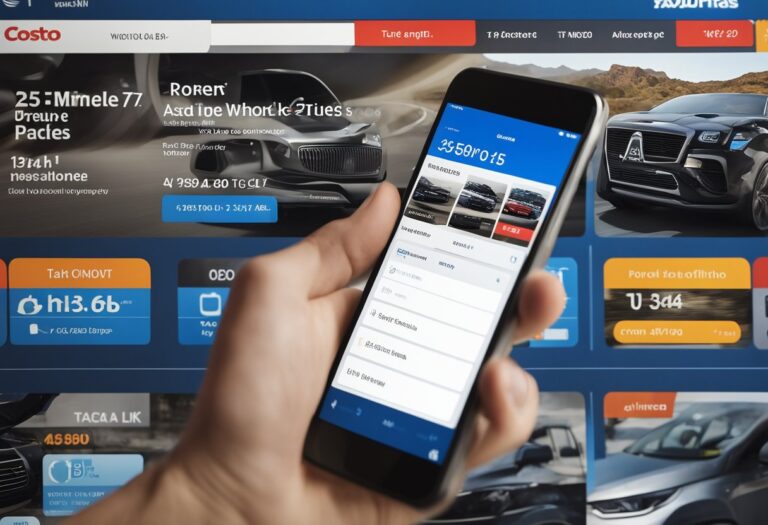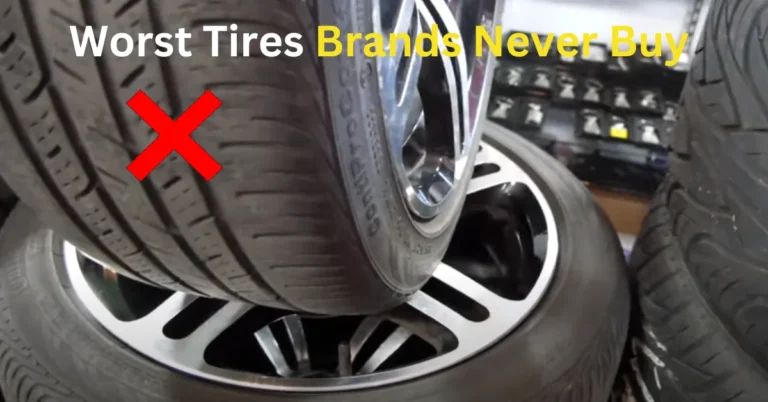What is the Best Air Pressure for My Tires? 10 Tips
Maintaining proper best air pressure for my tires is crucial for both your safety and the longevity of your tires. However, many people are unsure about what the correct air pressure for their tires is. The recommended air pressure for your tires can depend on several factors, including the size of your tires, the weight of your vehicle, and the type of driving you do. If you’re looking for best winter tires check recommendations.

Driving with underinflated tires can result in poor fuel efficiency, reduced handling, and increased risk of tire failure. On the other hand, overinflated tires can lead to a harsher ride, reduced traction, and uneven tire wear. That’s why it’s important to find the optimal air pressure for your tires.
In this article, we will explore the different factors that can affect the recommended air pressure for your tires. We will also provide tips for checking your tire pressure, as well as discuss the potential risks of driving with improperly inflated tires. By the end of this article, you should have a better understanding of what the best air pressure for your tires is and why it matters.
Understanding Best Air Pressure For My Tire

Factors Affecting Tire Pressure
Tire pressure is the amount of air inside a tire, measured in pounds per square inch (PSI). The correct tire pressure for a vehicle can be found in the owner’s manual or on a sticker located on the driver’s side door jamb. Several factors can affect tire pressure, including:
- Temperature: Tire pressure can fluctuate with temperature changes. For every 10 degrees Fahrenheit change in temperature, tire pressure can change by 1 PSI. Therefore, it is important to check tire pressure regularly, especially during extreme temperature changes.
- Altitude: Higher altitudes can cause tire pressure to decrease, so it is important to check tire pressure before driving in mountainous regions.
- Load: The weight of the vehicle and its contents can affect tire pressure. Overloading a vehicle can cause tires to overheat and wear out faster.
Benefits of Correct Tire Pressure
Maintaining the correct tire pressure can provide several benefits, including:
- Improved fuel efficiency: Underinflated tires can decrease gas mileage by up to 0.2 percent for every 1 PSI drop in pressure. Properly inflated tires can improve fuel efficiency and save money on gas.
- Longer tire life: Overinflated or underinflated tires can wear out faster and unevenly. Properly inflated tires can extend the life of the tires and save money on replacements.
- Better handling: Correct tire pressure can improve vehicle handling and reduce the risk of accidents.
Overall, it is important to check tire pressure regularly and maintain the correct pressure for the vehicle. This can improve fuel efficiency, extend tire life, and improve vehicle handling.
Determining the Optimal Tire Pressure

When it comes to determining the optimal tire pressure for your vehicle, there are a few factors to consider. In this section, we will discuss the recommended tire pressure by the vehicle manufacturer, tire pressure monitoring systems, and seasonal adjustments. In that way I can determine the best air pressure for my tire.
Vehicle Manufacturer Recommendations
The vehicle manufacturer’s recommendations for tire pressure can be found in the owner’s manual or on a sticker located on the driver’s side door jamb. These recommendations are based on the weight of the vehicle, the size of the tires, and the intended use of the vehicle. It is important to follow these recommendations to ensure optimal performance, fuel efficiency, and tire longevity.
Tire Pressure Monitoring Systems
Many modern vehicles are equipped with tire pressure monitoring systems (TPMS) that alert the driver when tire pressure is low. These systems use sensors located in each tire to measure pressure and temperature. If the pressure falls below a certain threshold, the system will alert the driver with a warning light on the dashboard. It is important to note that TPMS should not be relied upon solely to determine the optimal tire pressure. It is still recommended to follow the manufacturer’s recommendations for optimal performance.
Seasonal Adjustments
Tire pressure can fluctuate with changes in temperature. As the temperature drops, the air inside the tire condenses, causing the pressure to drop. It is important to check tire pressure regularly, especially during seasonal changes. In colder months, it is recommended to increase tire pressure by 1 psi for every 10 degrees Fahrenheit decrease in temperature. In warmer months, it is recommended to decrease tire pressure by the same amount. This adjustment can help ensure optimal performance and safety.
Overall, determining the optimal tire pressure for your vehicle is essential for optimal performance, fuel efficiency, and tire longevity. By following the manufacturer’s recommendations, using TPMS as a guide, and making seasonal adjustments, you can ensure that your tires are properly inflated and ready for the road.
How to Check and Adjust Tire Pressure

Using a Pressure Gauge
Checking tire pressure regularly is important for maintaining good fuel efficiency, preventing tire damage, and ensuring safety on the road. To check tire pressure, first, make sure the tires are cool and not warm from driving. Remove the valve cap from the tire and press the pressure gauge onto the valve stem. The gauge will display the tire pressure in PSI (pounds per square inch). If the reading is too low or too high, adjust the pressure accordingly. It is essential to check best air pressure for my tire by myself or by mechanic.
Inflating to the Correct Pressure
To inflate the tire to the correct pressure, first, find the recommended PSI for your vehicle. This information can usually be found in the owner’s manual or on a sticker located on the driver’s side door jamb. Use an air compressor to inflate the tire to the recommended PSI. It’s important not to overinflate the tire as this can cause it to wear out more quickly in the center. On the other hand, underinflated tires can cause the edges to wear more quickly and can lead to blowouts.
It’s recommended to check tire pressure at least once a month and before long trips. Additionally, it’s important to check tire pressure after any sudden changes in temperature or altitude. By following these simple steps, drivers can maintain proper tire pressure and ensure a safe and efficient driving experience.
Common Mistakes to Avoid

When it comes to maintaining proper tire pressure, there are several common mistakes that drivers make. These mistakes can have serious consequences, including reduced fuel efficiency, decreased tire lifespan, and even an increased risk of accidents. In this section, we will discuss some of the most common mistakes to avoid when it comes to tire pressure.
Overinflation Risks
One of the most common mistakes drivers make is overinflating their tires. Overinflated tires can be dangerous, as they are more prone to blowouts and can lead to a rougher ride. Additionally, overinflated tires can cause uneven wear, reducing the lifespan of the tire. It is important to always follow the manufacturer’s recommended tire pressure, which can usually be found on a sticker inside the driver’s side door or in the owner’s manual. Overinflating tires can also lead to reduced traction, which can be especially dangerous in wet or slippery conditions. This over inflation is only happed when you don’t know what is best air pressure for my tire.
Underinflation Risks
Another common mistake drivers make is driving with underinflated tires. Underinflated tires can be just as dangerous as overinflated tires, if not more so. They can lead to decreased fuel efficiency, reduced handling, and increased stopping distances. Additionally, underinflated tires can cause uneven wear, reducing the lifespan of the tire. It is important to regularly check your tire pressure and inflate them to the manufacturer’s recommended pressure. Drivers should also be aware that tire pressure can fluctuate with changes in temperature, so it is important to check them regularly, especially during extreme weather conditions.
By avoiding these common mistakes, drivers can ensure that their tires are properly inflated, which can lead to a safer, more efficient, and longer-lasting ride.
Maintaining Tire Pressure

Regular Checks
Regularly checking tire pressure is an essential part of maintaining vehicle safety. It is recommended to check tire pressure once a month, as well as before long trips. Tire pressure can be checked using a tire pressure gauge, which can be purchased from most auto parts stores.
When checking tire pressure, it is important to ensure that the tires are cool, as heat can cause the air inside to expand and give an inaccurate reading. The recommended tire pressure can be found in the vehicle owner’s manual or on a sticker located on the driver’s side doorjamb.
If the tire pressure is too low, it can cause the tire to wear unevenly and reduce fuel efficiency. On the other hand, if the tire pressure is too high, it can cause the tire to wear in the center and reduce traction. It is good practice for me to check best air pressure for my tire.
Understanding Pressure Variations
It is important to understand that tire pressure can vary due to changes in temperature. For every 10-degree Fahrenheit change in temperature, tire pressure can change by about 1 PSI (pound per square inch). This means that during the winter months, when temperatures are colder, tire pressure may decrease, while during the summer months, when temperatures are hotter, tire pressure may increase.
Additionally, tire pressure can also vary depending on the weight of the vehicle and the number of passengers. It is important to adjust tire pressure accordingly when carrying heavy loads or traveling with more passengers. The recommended tire pressure for these situations can also be found in the vehicle owner’s manual or on a sticker located on the driver’s side doorjamb.
By regularly checking tire pressure and understanding pressure variations, vehicle owners can maintain optimal tire pressure and ensure a safe and fuel-efficient driving experience.
Frequently Asked Questions

How can I determine the optimal tire pressure for my vehicle?
The optimal tire pressure for your vehicle can be found in your vehicle owner’s manual or on a placard located on the driver’s side door jamb. The recommended tire pressure is determined by the manufacturer to provide the best balance of handling, fuel economy, and ride comfort for your specific vehicle.
What is the difference between maximum and recommended tire pressure?
Maximum tire pressure is the highest pressure that a tire can safely handle, while recommended tire pressure is the pressure that the vehicle manufacturer recommends for optimal handling, fuel economy, and ride comfort. It is important to always follow the recommended tire pressure, as overinflated or underinflated tires can affect handling, braking, and fuel economy.
How does outside temperature affect my tire pressure settings?
Outside temperature can affect tire pressure settings, with colder temperatures causing tire pressure to decrease and warmer temperatures causing tire pressure to increase. It is important to check your tire pressure regularly and adjust it as necessary to ensure optimal performance.
Where can I find a tire pressure chart for my vehicle?
A tire pressure chart for your vehicle can be found in your vehicle owner’s manual or online through the tire manufacturer’s website. It is important to always use the recommended tire pressure for your vehicle, as overinflated or underinflated tires can affect handling, braking, and fuel economy.
Is there a general rule for tire PSI in summer conditions?
There is no general rule for tire PSI in summer conditions, as the recommended tire pressure for your vehicle remains the same regardless of the season. However, it is important to check your tire pressure regularly and adjust it as necessary to ensure optimal performance.
How often should I check and adjust my tire pressure?
It is recommended that you check your tire pressure at least once a month and before long trips. It is also important to check your tire pressure after any significant change in temperature or if you notice any changes in handling or ride comfort.




